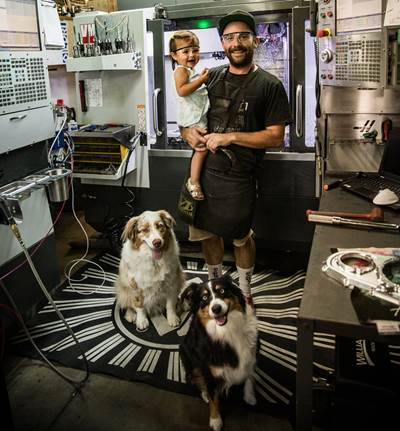Share





Cutting tools are getting harder.
I don’t mean that in terms of Rockwell hardness, though this is notable too. I mean “harder” as in more difficult. Employing the right cutting tool for each operation of a given part is more important than it has ever been, because a machine shop’s profitability is more reliant today on making the optimal use of machine tool capacity and time. I am thinking here of job shops delivering work characterized by small quantities and lead times. For the shop like this, winning — that is, succeeding within a more tightly competitive marketplace of machining suppliers — requires keeping cycle time low during the day using tools that are productive, and running unattended at night using tools that are reliable. A general-purpose tool is an impediment to the former. A cheap tool is an impediment to the latter.
The result: Job shops must keep an extensive variety of tools at the ready. And the irony is, the problem is big when the shop is small. Established shops might have contracts that let them predict work (and therefore tooling), not to mention access to consignment relations with tooling suppliers. Newer shops generally have neither.
I recently discussed this issue with the owner of a shop that is very small. Dan Donaworth is the founder and sole employee of Dan’s Custom Machining in Williamsburg, Ohio, a shop equipped with both a high-end CNC machining center and a CNC lathe. The amount of tooling that the shop keeps at the ready amounts to half again the price of another major machine tool.
The conversation was instructive for the picture it offered of the tool discipline helpful to a small shop today. Here is part of our exchange, adapted from an episode of the video series I filmed with him, The One Person Shop:
Modern Machine Shop: How much money do you have tied up in cutting tools right now?
Dan Donaworth, Dan’s Custom Machining: If you added up our cutting tool inventory for end mills plus inserts for turning, we have probably $15,000 to $17,000 of tools on-hand in the shop. We keep in stock probably 100 different varieties of end mills, from sizes as small as 0.02 inch up to 3/4-inch tools.

MMS: Why is the inventory so important?
DD: For a job shop like this, short lead times are routine. Practically all our customers need their parts quickly. Being able to offer two or three weeks of turn time is very important, but some tools are made elsewhere and might be subject to shipping delays. When the tool is already on hand, with extras, we can keep going.
MMS: Was there a situation when you did not have a tool you needed?
DD: In the case of one part I was machining, I thought I had everything ordered. On a Friday, I went to start machining the part, which was due that Monday. I found I did not have the long-reach end mill I thought I needed. I ended up having to improvise, and I did find a work-around. But life was not fun for that weekend, trying to get that job done. Now, that end mill is one more tool that I am careful to keep in stock.
MMS: How do you know what tools to keep in stock? What kind of thinking went into determining which tools you have on-hand?
DD: Our CAM library is up to date with all the tools recently needed. These are the tools kept organized in labeled drawers near the machining center. I try to keep four of each tool in stock, or three for the tools less commonly used. And once we establish a relationship with a customer, we learn what tools their parts are likely to need and keep those in stock as well.
MMS: What does reordering look like? What is your system for maintaining that inventory?
DD: Once per week, I order tools. Each tool stocked in the drawers has a reorder quantity. When I take an end mill or an insert, if that brings the remaining stock down to the reorder amount, then I will take the empty cartridge and put it on my desk. That’s how, at the end of the week, I know what to reorder. Then at the beginning of every week, I go through, count the drawers and make sure I didn't miss anything.
MMS: Do you have one tooling supplier or a variety?
DD: For turning inserts, we have a variety of sources. For end mills, we have been able to work with one tooling supplier for most everything. I prefer this; keeping to one supplier just makes it easier to keep track. Also, since this supplier is local, working with this company lets us obtain tools in one day if they are in stock. We pick tooling vendors based on accessibility, service and support.
Read Next
How to Manage Cutting Tool Inventory in a Small Job Shop — The One-Person Shop #4
Working in short lead times means maintaining a large range of tools to be ready. What is the right way to stock and organize this investment?
Read MoreNo Such Thing as Luck: A One-Person Shop Owner’s Success Story
You could say he’s a lucky Guy. He has the ideal setup for a moonlighting at-home-machinist: The perfect location, the perfect day job, and a double-threat skill set that allows him to hire himself for prototyping and low-volume production work. But Guy Driscoll’s biggest talent might be creating his own luck.
Read More5 Rules of Thumb for Buying CNC Machine Tools
Use these tips to carefully plan your machine tool purchases and to avoid regretting your decision later.
Read More


























